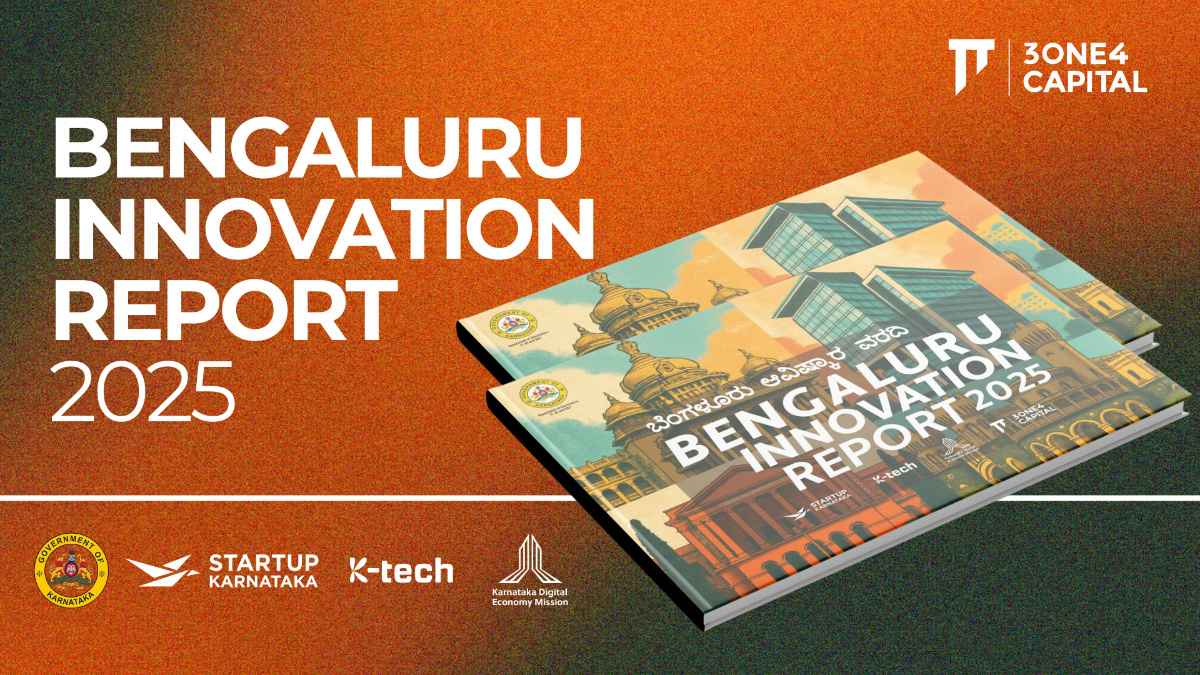
From Factory to Future: Industry 4.0's Impact on Manufacturing
Industry 4.0 (I4.0), also known as the Fourth Industrial Revolution or 4IR, is the digitisation of the manufacturing sector. It remains a buzzword in the global manufacturing industry, and the sector has become increasingly active since 2016-2017, gaining traction post-pandemic. COVID-19 served as an inflexion point for most digital projects, with industries realising the potential of digitisation in operations. Industry 4.0’s market size reached approximately $70 billion in 2022 and is poised to soar to $260 billion by 2030, driven by tailwinds such as increased digitisation post-pandemic, the rise of artificially intelligent systems, and increased inflation.
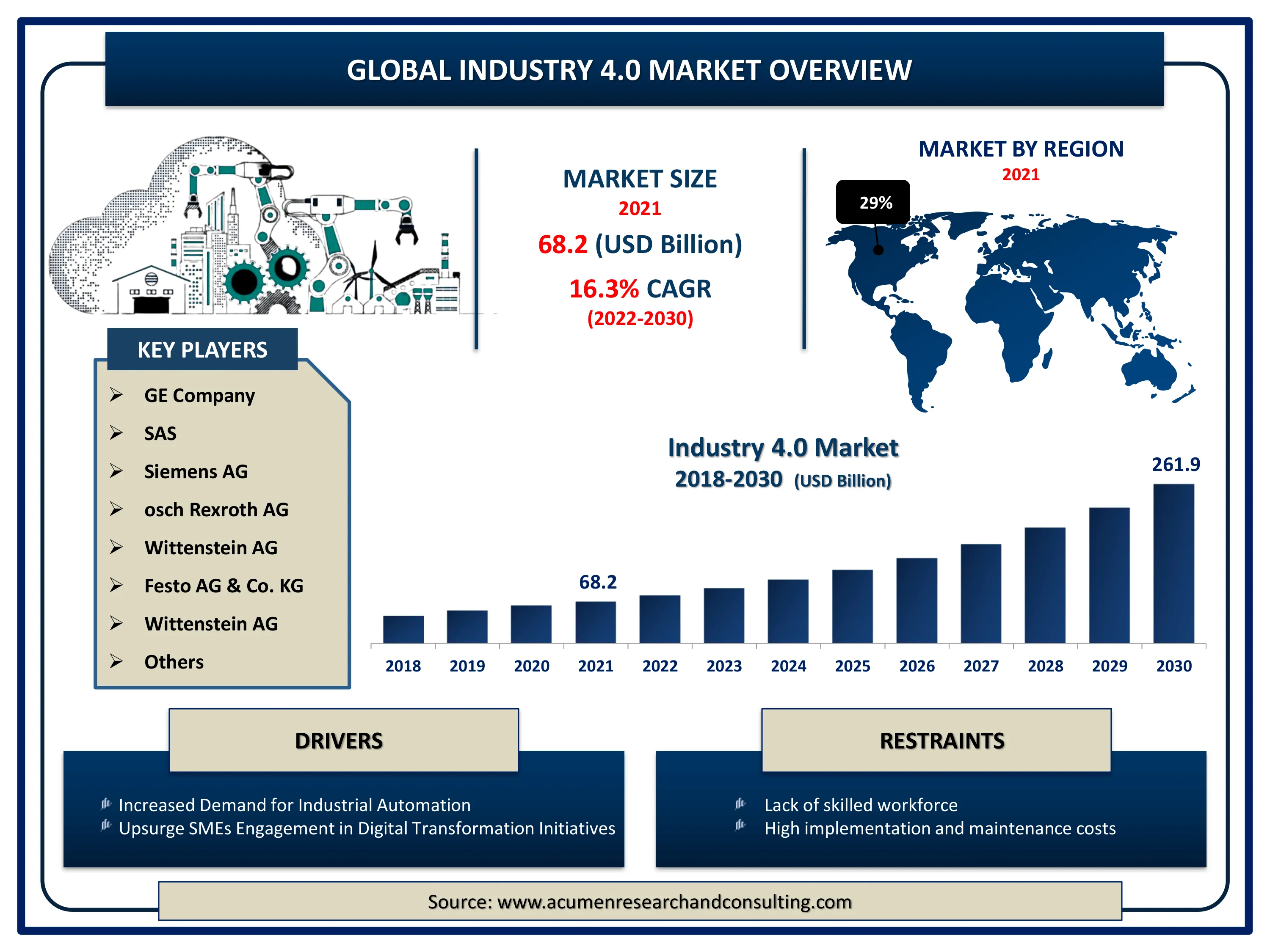
Globally, the ‘Global Lighthouse Network,’ an initiative by the World Economic Forum (WEF) and McKinsey & Company, stands out as a remarkable recognition system. It identifies leading manufacturing sites, i.e., lighthouse companies, that have embraced and scaled Fourth Industrial Revolution technologies. These companies showcase substantial enhancements in operational performance indicators encompassing sustainability, productivity, agility, and speed to market. They seamlessly integrate I4.0 technologies across manufacturing, end-to-end supply chain, and sustainability practices.
With over 132 member sites or integrated supply chains worldwide as of January 2023, the program symbolises operational excellence and certification within the I4.0 paradigm. However, despite these notable initiatives, the overall adoption of I4.0 remains modest, with only 20% of lighthouse companies considered advanced in utilising these transformative technologies. The adoption rate drops significantly to 7% for non-lighthouse companies. While the world is preparing for the transition to the I5.0 paradigm, the current data reveals substantial implementation gaps in I4.0.
In this article, we aim to delve into the key use cases observed within this network and shed light on the obstacles hindering their widespread implementation worldwide. We engaged with operators, strategists, and innovative startups in this domain, curating valuable insights. These insights are intended to guide and support teams venturing into this challenging yet immensely promising landscape.
Key Trends in the Space
According to a recent survey by the WEF's Global Lighthouse Network, productivity, sustainability, and resilience are the top priorities for 80% of respondents, and two-thirds believe in scaling I4.0. technologies being essential to achieving these goals.
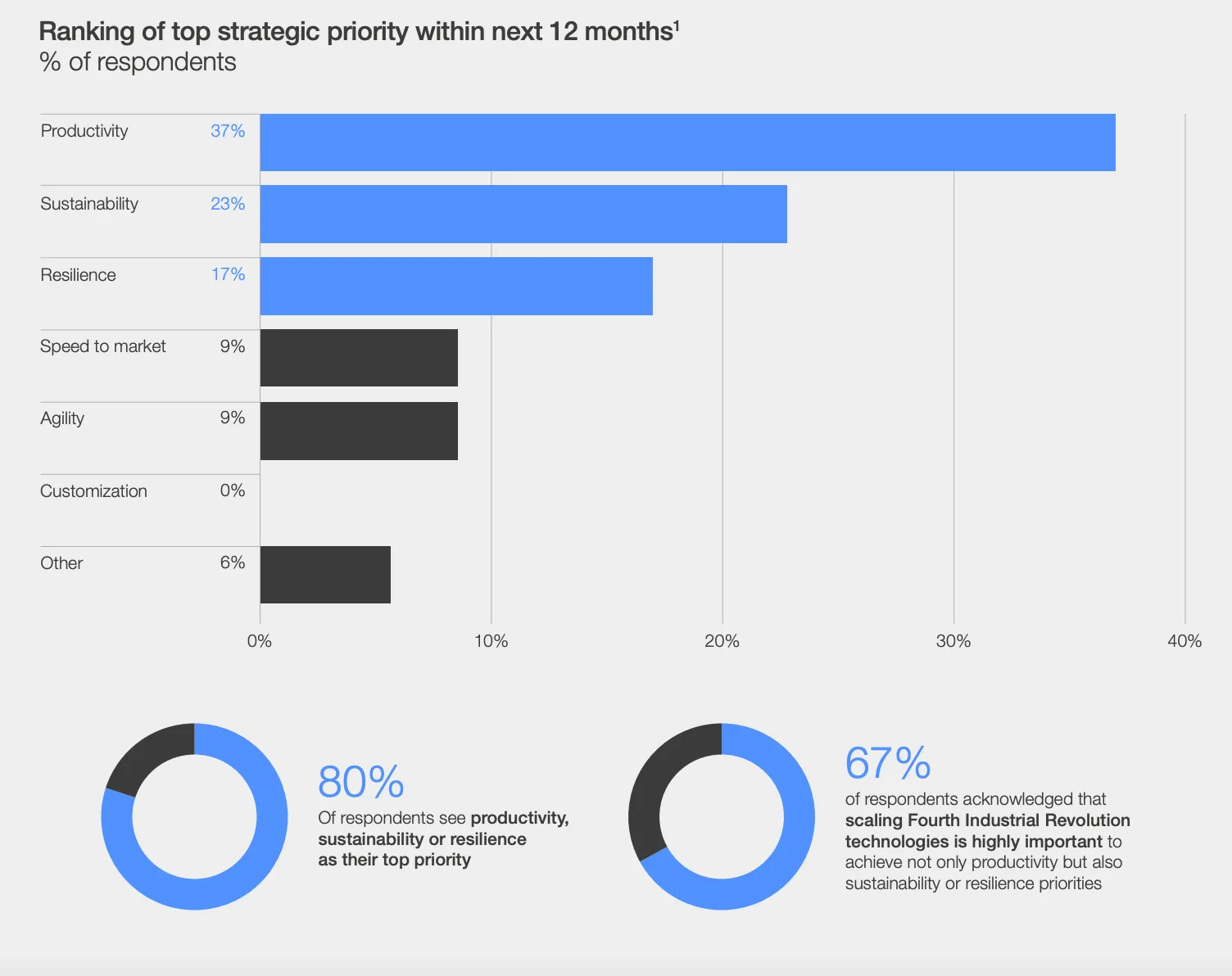
The current implementation of I4.0 technologies across the network shows a strong focus on digital assembly and quality management at manufacturing sites, and supply chain connectivity across the end-to-end value chain.
The distribution below provides valuable insights into the allocation of applications within a smart factory, offering a bird’s eye view of the tech landscape employed by the world's most advanced industrial complexes.
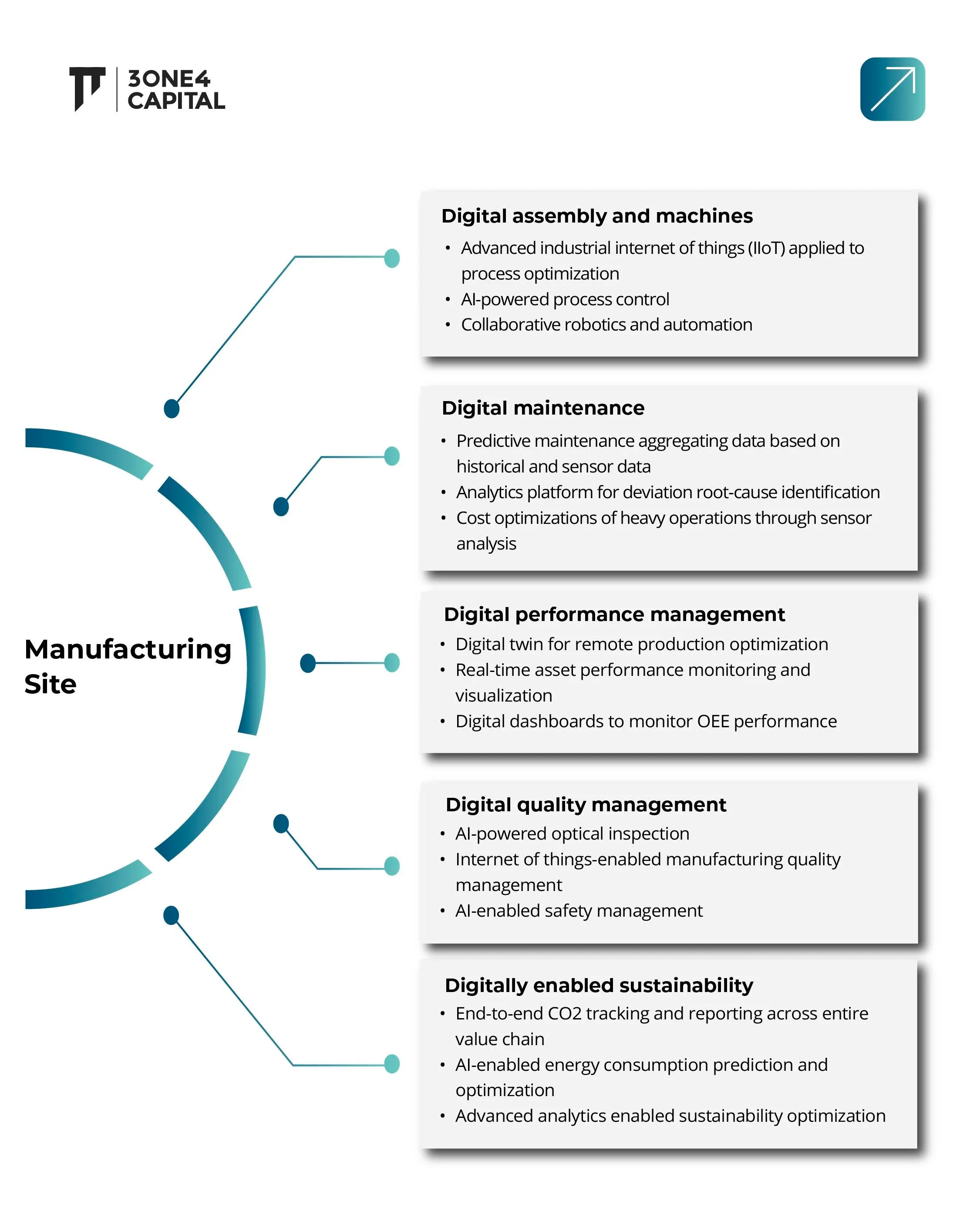
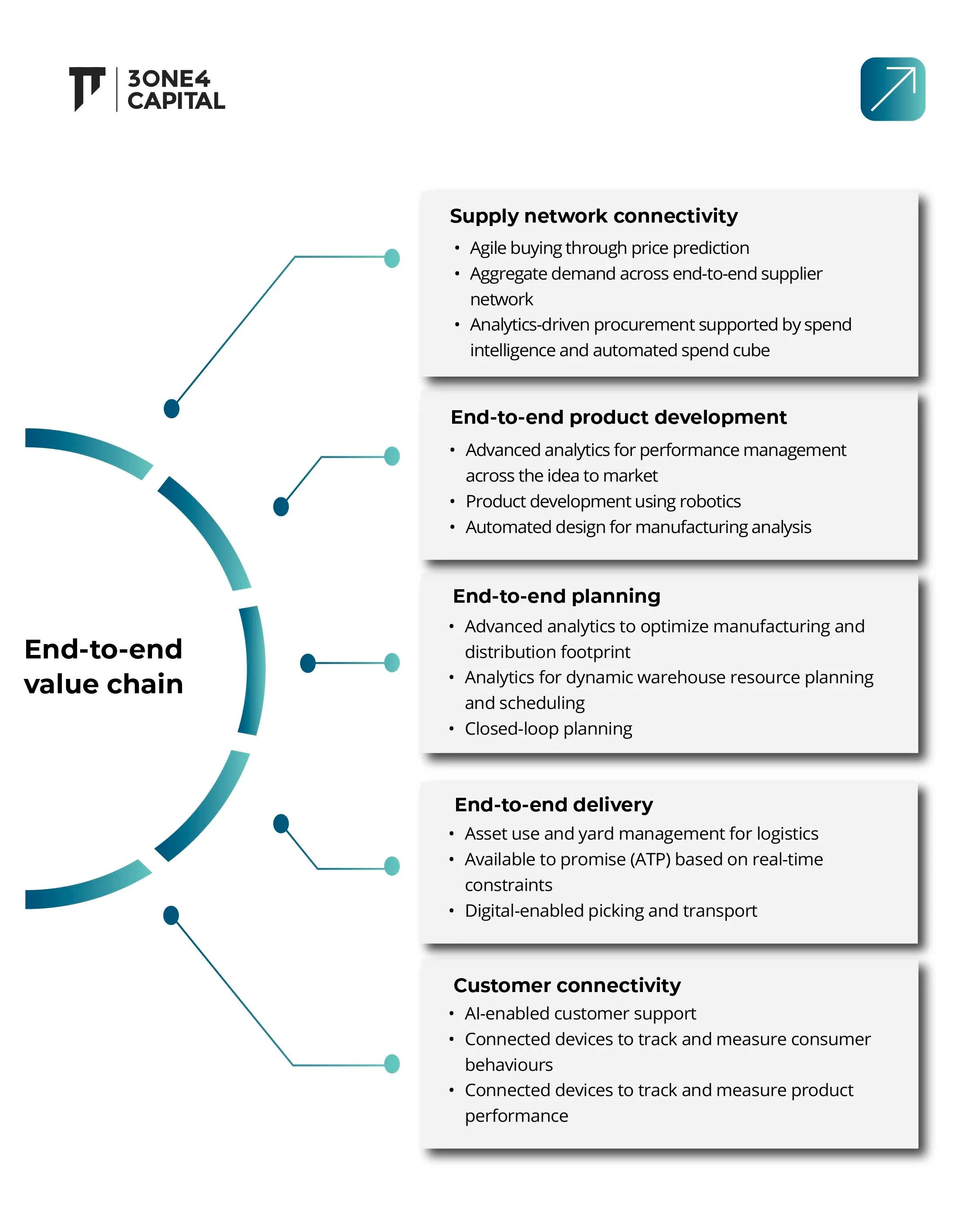
Challenges
Efforts to introduce Industry 4.0 technologies often face challenges and frequently stall in a phase commonly referred to as "pilot purgatory." This phase poses a substantial obstacle to the effective implementation and modernisation of large enterprises. Early-stage startups, in particular, grapple with a substantial number of customer pilots that can linger indefinitely without progressing into broader, scalable rollouts.
Based on conversations with operators across different verticals, we have identified the following bottlenecks that are broadly consistent:
- Achieving Broader Objectives through Product Configurability
While a solution may prove highly effective for specific tasks or use cases, the challenge often lies in expanding its functionality into a comprehensive, seamlessly integrable platform capable of spanning diverse verticals. Many existing solutions make incremental progress in this direction but fall short of the overarching vision required for holistic integration. Moreover, the intricacies of the physical world can complicate efforts to adapt cases to varying segments and contexts, even when similarities exist across industries.
For example, a large Indian conglomerate's experience with a truckload optimisation platform illustrates the challenges of using a one-size-fits-all solution for different product categories. While the platform optimised material transfer via boxes, it failed to factor in the dimensions of other products, such as rolls or sheets, leading to challenges in maximising load coverage.
- Leadership Onboarding for Digital Transformation
Successful digital transformations require significant buy-in from top management. However, business and digital teams are often siloed, with Digital Officers acting as internal sellers trying to implement solutions without enterprise support. Business leaders must adopt the role of advocates for digital transformation, even if it entails acquiring new knowledge and skills themselves. The lack of vision from leadership can lead to a scattered and unstructured approach across different segments, which inhibits mass technology adoption.
- Readiness for Industry 4.0
Organisations must prepare for Industry 4.0 on multiple fronts, including IT infrastructure, change management, budget, and resource allocation. While many executives aim to create new value for their stakeholders, Industry 4.0 introduces new technological challenges that require people to adapt and increase their level of digital literacy gradually.
One of the biggest challenges in the current technological environment is intelligently combining and integrating multiple data sources to reduce situational awareness. Moreover, without adequate IT support, these initiatives are unlikely to be successful. Many organisations face challenges with change management. Digital transformation can lead to transparency in terms of data and decision-making, which may take away control from some people while empowering others. Organisations need to be extremely objective in defining KPIs and goals across hierarchies to avoid internal conflicts and confusion.
For startups in their zero-to-one phase, grappling with defining their Ideal Customer Profile (ICP) and Go-to-Market (GTM) strategy, early signs of being stuck in a 'pilot purgatory' include:
(a) A customer's inability to clearly define the desired business outcomes.
(b) Uncertainty regarding the timeline and budget for full-scale deployment following a successful pilot.
(c) A noticeable absence of meaningful engagement or commitment from top-level management.
Remarkably, the majority of enterprises are non-hesitant to invest in exploring cutting-edge technological innovations, even if it means allocating a few thousand dollars for this purpose.
Key Learnings from Startups with Successful Breakthroughs
Industry 4.0 (I4.0) is a challenging segment to enter, but several early-stage startups have achieved product-market fit and scale. We believe that certain approaches adopted by these startups helped them avoid common pitfalls in this implementation-heavy industry.
- Problem Statement Identification
The chosen problem statement or target area should align at the confluence of (a) delivering organisational benefits, (b) enhancing operational efficiency, and (c) providing direct monetary gains. It is crucial to precisely identify a particular digital transformation that directly translates into tangible business outcomes. An organisation might have numerous use cases to consider while striving to transition into smart factories or operations. The significance and urgency of the problem statement will ultimately dictate the prioritisation for implementation.
- Top-down GTM
Early GTM strategies for startups should leverage the founders' existing network to establish initial traction. Engaging directly with senior leadership within larger enterprises ensures a comprehensive top-down endorsement of the solution, effectively mitigating common implementation bottlenecks in change-management projects.
To facilitate a seamless implementation, it's essential to gain a deep understanding of their specific needs, whether it's optimising top-line growth, enhancing efficiency in processes, or advancing sustainability goals, and tailor the product positioning accordingly.
- Strong Founding Team
The founding team should have a strong market fit and a blend of domain and digital expertise. Without a deep understanding of the customer's entire digital suite, business, and product, it is difficult to build and launch a successful product.
- Vertical Focussed
Early-stage startups should focus on a vertical market in the 0-1 and 1-10 phases of their journey. Industry nuances take time to understand and integrate into a product, and networking effects only kick in after product-market fit (PMF) is achieved. Therefore, it is important to capitalize on PMF to establish a strong initial brand.
Focusing on horizontal expansion too early can hinder growth. Even similar-looking industries have different physical world nuances, and force-fitting solutions to different industries does not lead to long-term success.
- Service Leading to a Product
While many teams successfully identify the problem statement and the desired outcomes, they often face challenges in developing the initial product version. Enterprises may not always embrace existing products that necessitate substantial customisation to fit their needs. Therefore, adopting a hybrid approach (blending technology for the product with a service-oriented focus for customer success) in the early stages can prove beneficial.
However, it's crucial to emphasise that the ultimate solution should not remain enterprise-specific or confined to an isolated platform. Scalability is achievable through a multi-vendor approach and highly modular product design, ensuring adaptability and widespread implementation.
We find ourselves at the cusp of the Fourth Industrial Revolution, a juncture abundant with potential for innovation and exponential growth. The convergence of the physical, digital, and biological realms is fundamentally reshaping industries and revolutionising how we engage with work, life, and society.
DISCLAIMER
The views expressed herein are those of the author as of the publication date and are subject to change without notice. Neither the author nor any of the entities under the 3one4 Capital Group have any obligation to update the content. This publications are for informational and educational purposes only and should not be construed as providing any advisory service (including financial, regulatory, or legal). It does not constitute an offer to sell or a solicitation to buy any securities or related financial instruments in any jurisdiction. Readers should perform their own due diligence and consult with relevant advisors before taking any decisions. Any reliance on the information herein is at the reader's own risk, and 3one4 Capital Group assumes no liability for any such reliance.Certain information is based on third-party sources believed to be reliable, but neither the author nor 3one4 Capital Group guarantees its accuracy, recency or completeness. There has been no independent verification of such information or the assumptions on which such information is based, unless expressly mentioned otherwise. References to specific companies, securities, or investment strategies are not endorsements. Unauthorized reproduction, distribution, or use of this document, in whole or in part, is prohibited without prior written consent from the author and/or the 3one4 Capital Group.

.png)


